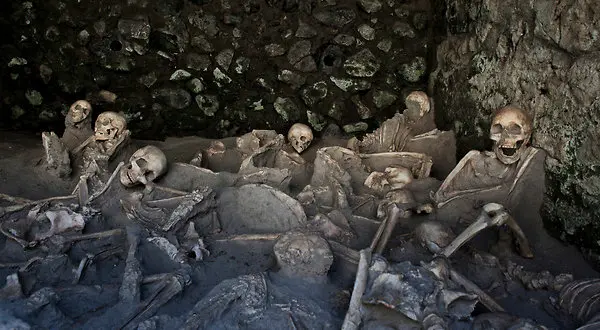
Unearthing Hercules’ Secrets: A Personal Perspective on its Preservation and Historical Significance
As a traveler and history enthusiast, I have had the privilege of exploring the ancient ruins of Herculaneum and Pompeii, two cities frozen in time by the catastrophic eruption of Mount Vesuvius in 79 AD. While both sites offer a glimpse into the daily lives of ancient Romans, Herculaneum’s remarkable preservation has captivated me in a way that sets it apart from its more famous counterpart, Pompeii. In this personal reflection, I share my perspective on why Herculaneum’s unique charm and extraordinary conservation have left an indelible mark on my archaeological journey.
One of the distinctive features that immediately struck me about Herculaneum was its more compact and intimate layout compared to the sprawling ruins of Pompeii. As I wandered through narrow streets, well-preserved villas, and intimate spaces, I felt a sense of connection with the past. Herculaneum’s smaller scale allows visitors to imagine the daily routines of its inhabitants more vividly, creating a more immersive experience.

Herculaneum’s proximity to the eruptive flow of volcanic mud and ash contributed to the preservation of organic materials, such as wood, in a way that Pompeii did not achieve. The unique preservation conditions at Herculaneum allowed for the conservation of wooden structures, furniture, and even scrolls. Witnessing these fragile items, remarkably intact after centuries, provided a tangible link to the daily lives of the ancient residents.
The state of preservation of Herculaneum’s frescoes and mosaics is simply breathtaking. The vibrant colors and intricate details of these ancient artworks transport visitors to a time when these walls adorned the homes of Roman elites. The level of artistry and the intact nature of these decorations in Herculaneum offer a more vivid portrayal of the opulence and sophistication of Roman life.

One of the most intriguing aspects of Herculaneum is the presence of escape tunnels leading to the ancient beachfront. These tunnels, used by residents attempting to flee the eruption, offer a poignant glimpse into the desperate attempts to survive. Additionally, the proximity to the sea highlights Herculaneum’s strong maritime influence, contrasting with Pompeii’s inland location. The preserved boat sheds and waterfront structures emphasize the significance of trade and maritime activities in the city.
While Pompeii rightfully draws large crowds due to its fame, Herculaneum offers a more intimate and less crowded setting. Exploring the ruins of Herculaneum feels like discovering a hidden gem, allowing for a more personal connection with the archaeological wonders. This quieter ambiance enhances the overall experience, fostering a sense of tranquility and contemplation.

Herculaneum’s remarkable preservation and unique attributes make it a standout destination for anyone fascinated by ancient history. As I reflect on my visit, I find that the smaller scale, preservation of wooden artifacts, vibrant frescoes, escape tunnels, maritime influence, and the less touristy atmosphere collectively contribute to the extraordinary appeal of Herculaneum over Pompeii. Each step through its well-preserved streets feels like a journey back in time, making Herculaneum an archaeological treasure that continues to resonate with those who seek to unravel the mysteries of the ancient world.




